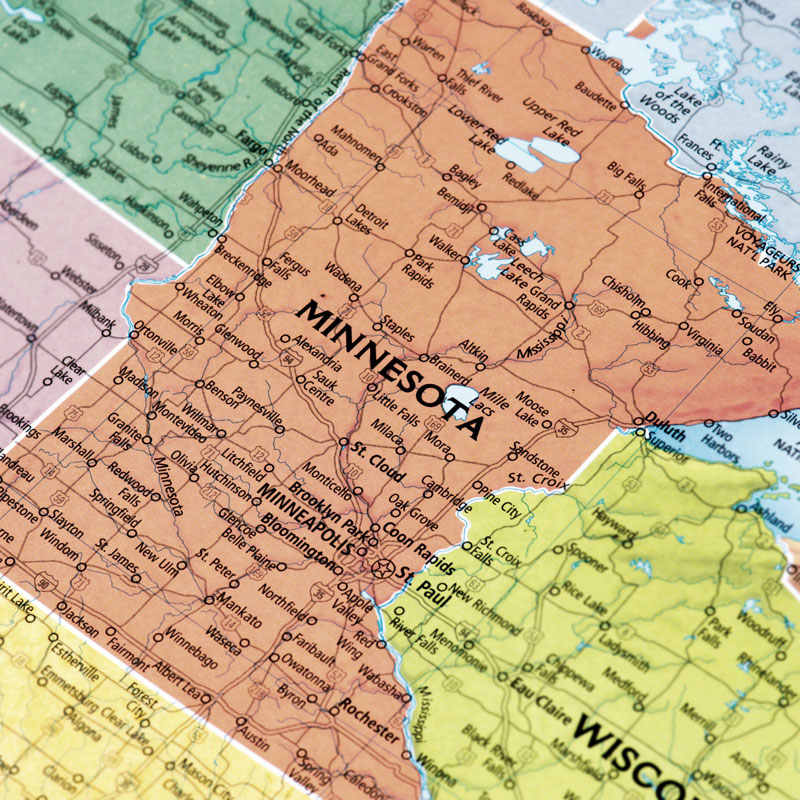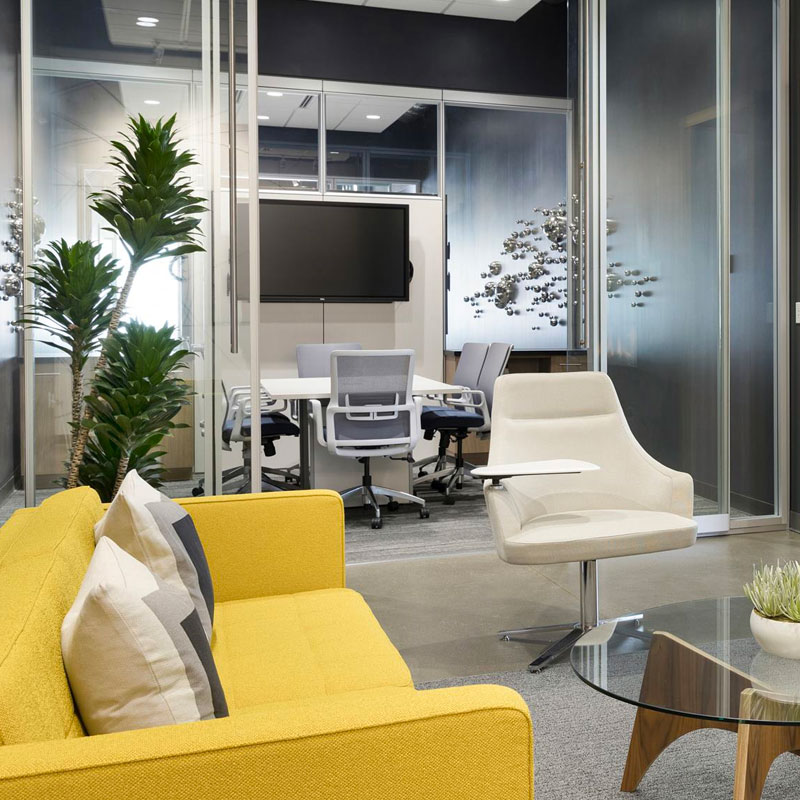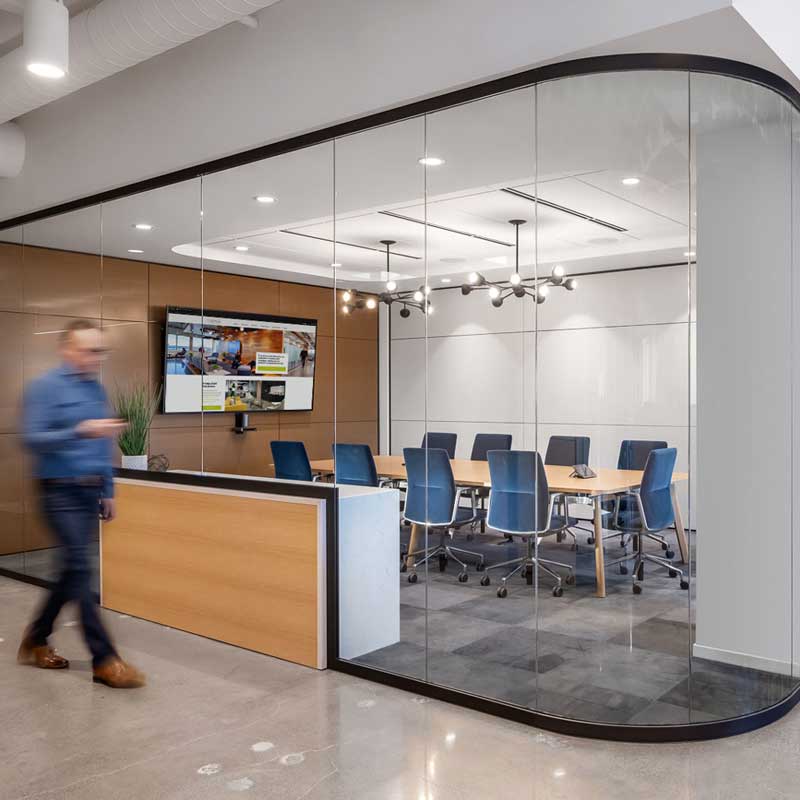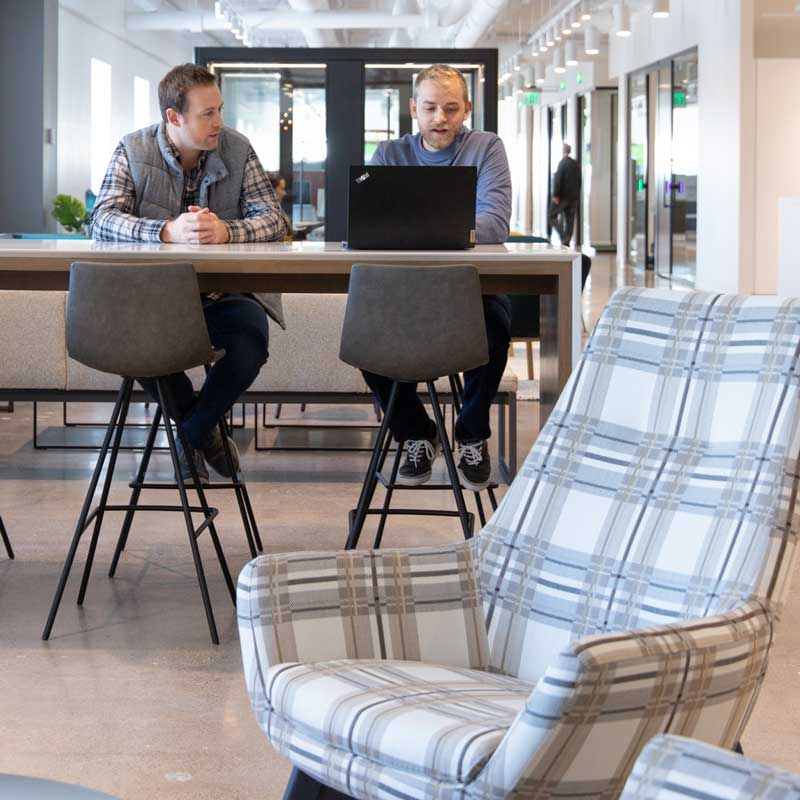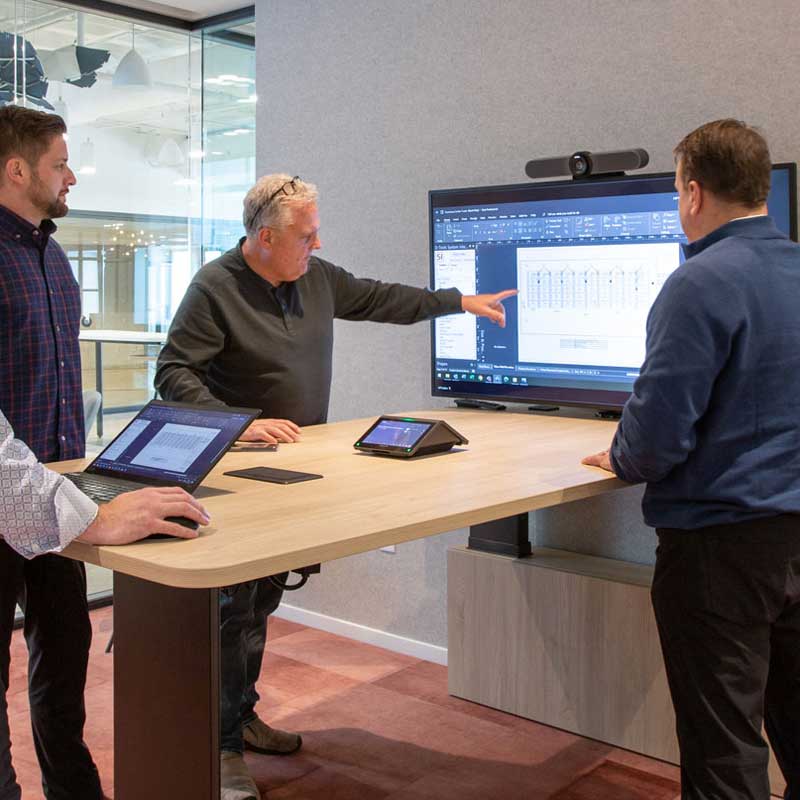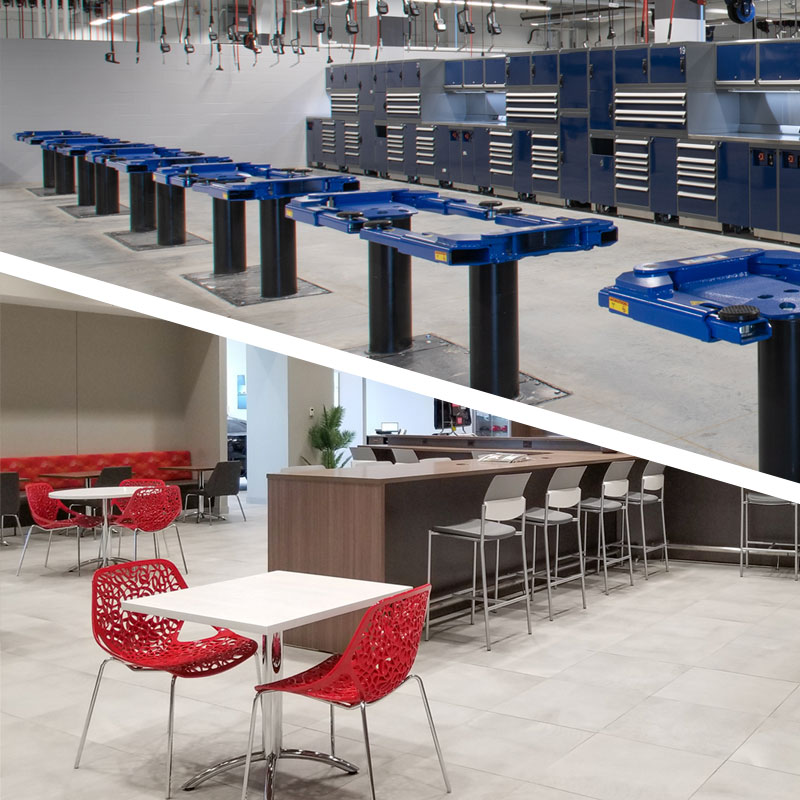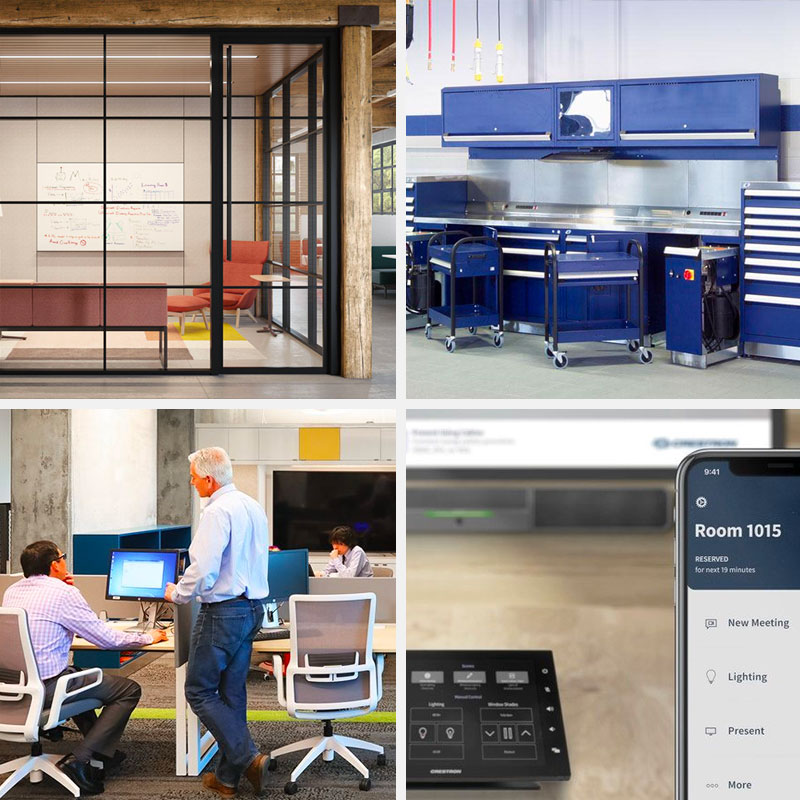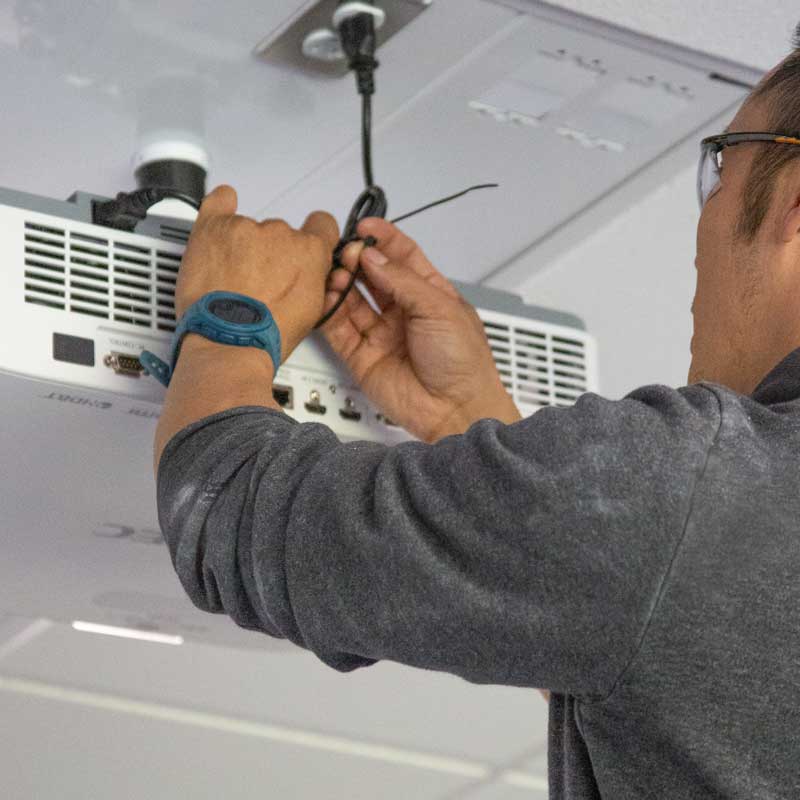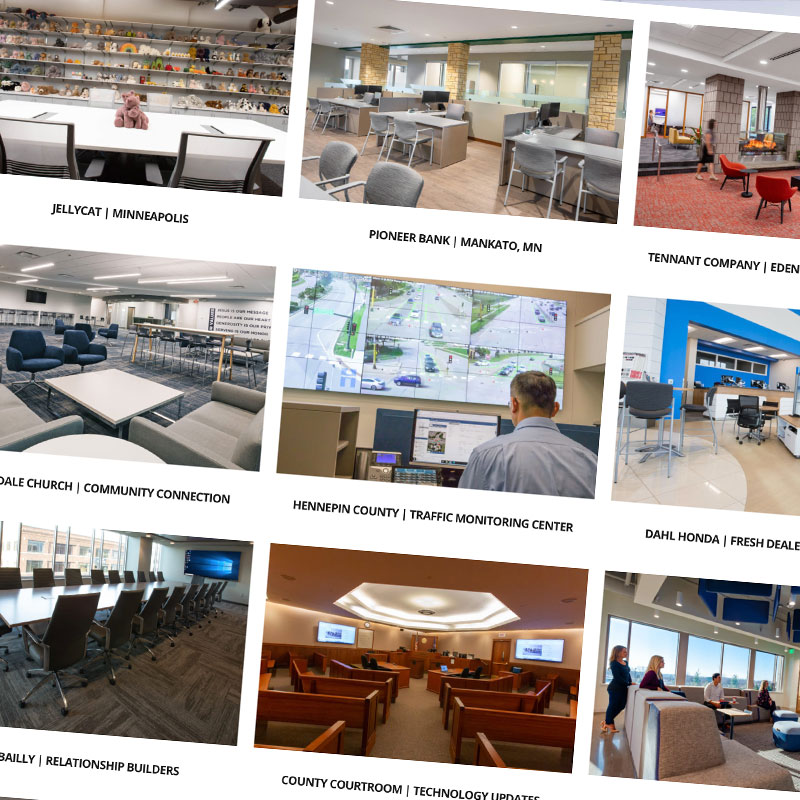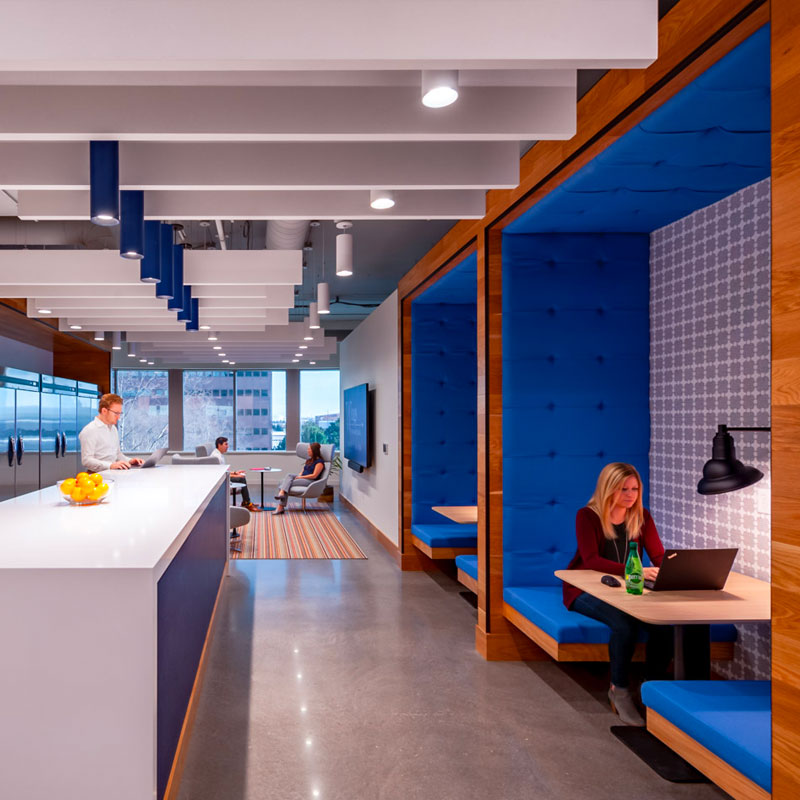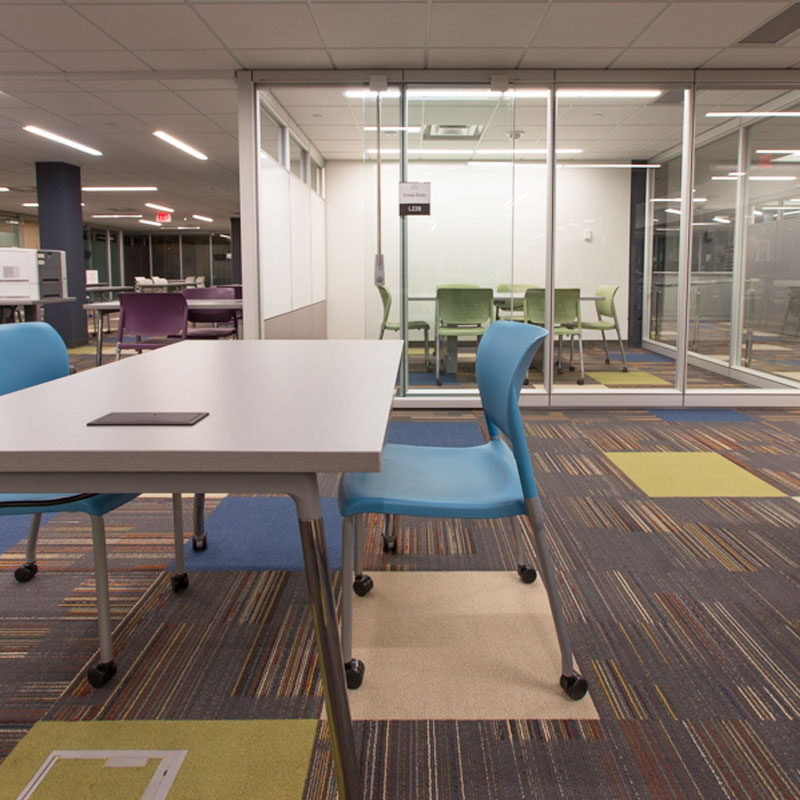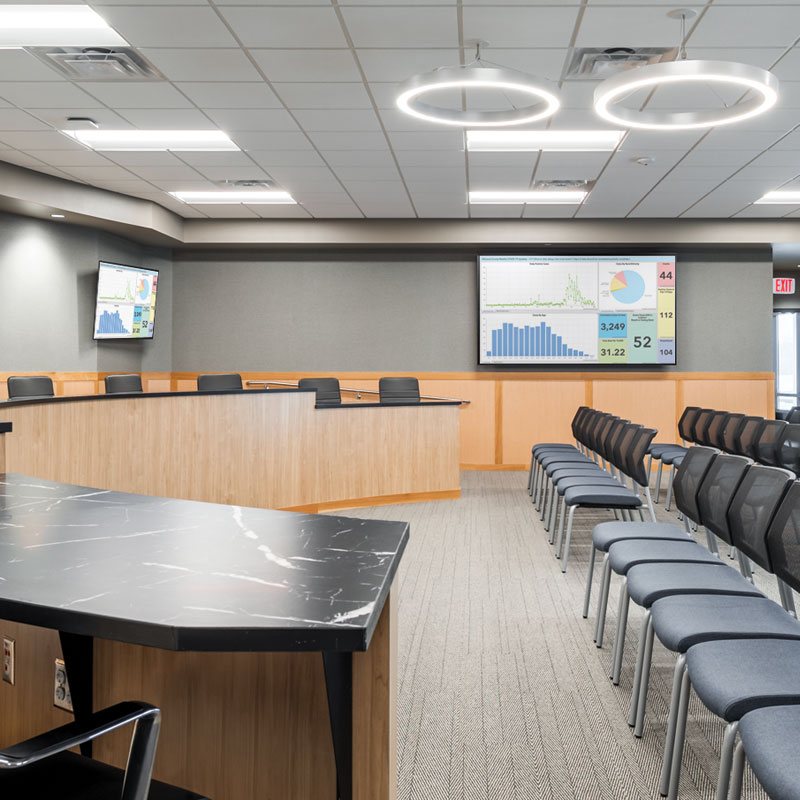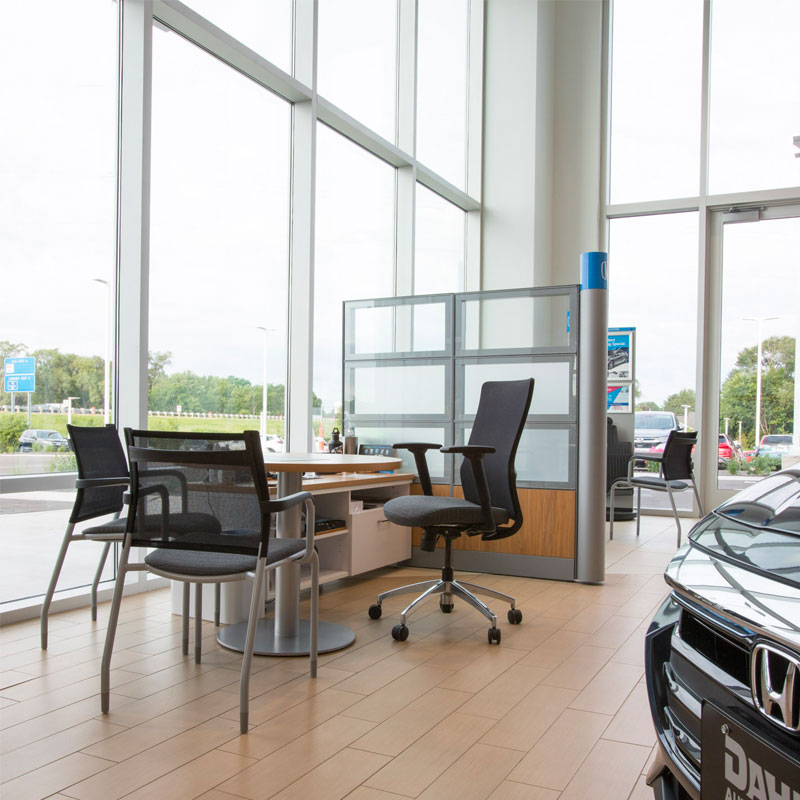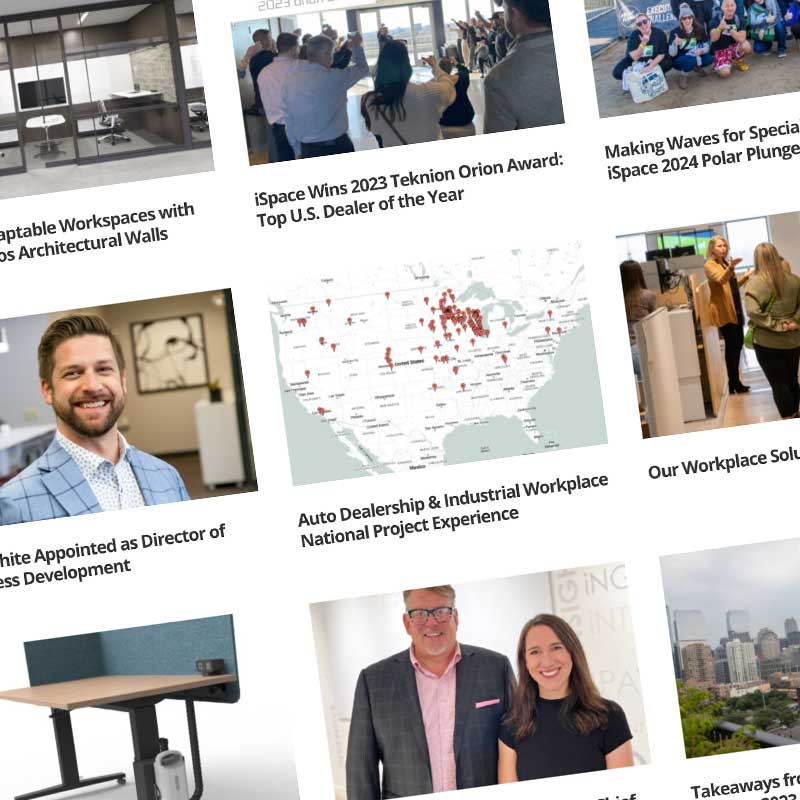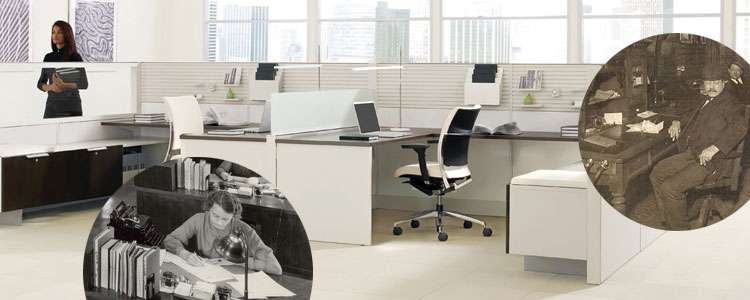Work technologies advance, work styles change, and so do work environments. And, like fashion, music and politics, office furniture follows cyclical trends. Since the inception of the “modern” office some time in the 1700’s, when bureaucracy began to flourish and paperwork began to flow to keep track of global operations, work spaces have always adapted to the needs of business and employees.
During the industrial revolution, as businesses began to grow exponentially in size, many specialized offices would be needed to handle the multifaceted operations of behemoth corporations. Desks were top-heavy, with bins for papers located above, rather than below in drawers. This resulted in work spaces that were often semi-private, if not well-organized, and somewhat cubicle-like in nature.
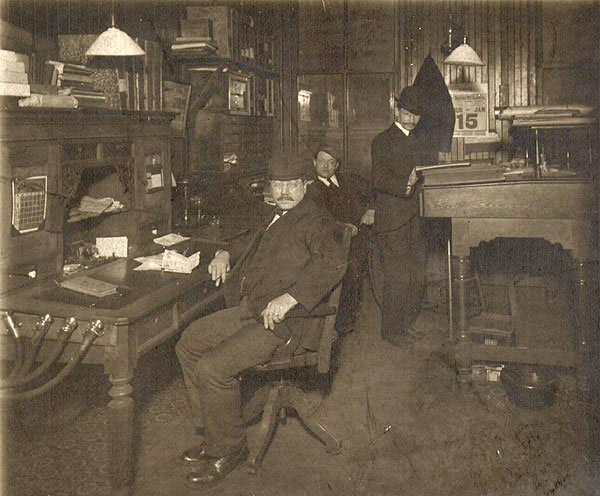
As companies grew and “managers” gained importance in ever-more-efficient office processes, the design of offices and desks evolved. The change to file cabinets down below, rather than bins above, may have been as much a result of managers’ need to easily keep an eye on their larger pools of employees as advances in design and office supplies.
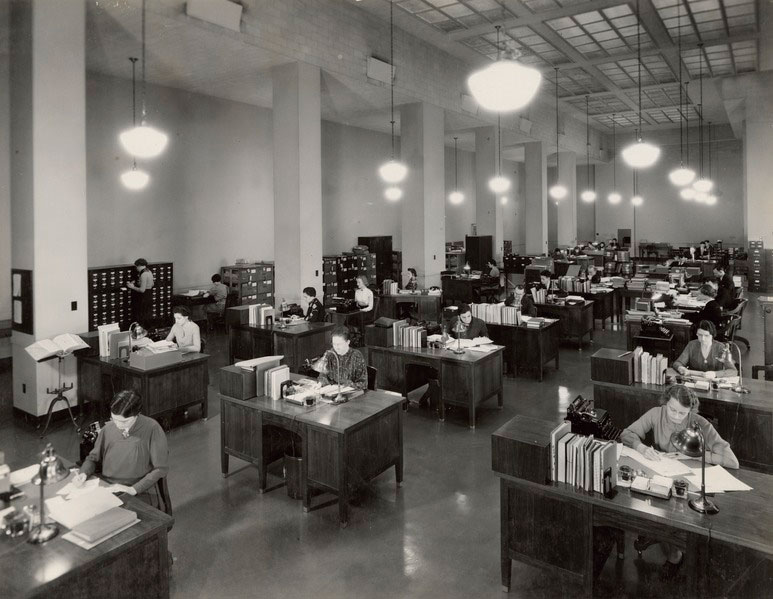
Today’s open floor plans with benching desk solutions aren’t exactly a new phenomenon. For much of the mid 20th century, larger offices utilized open plans using freestanding desks with aisles or little to no separation between workstations. The offices of Sterling Cooper, from Season One of AMC’s Mad Men epitomizes (to glamorous degree) the design and attitudes of the late 1950’s, early 60’s. The clerks of the office worked in an open plan similar to those in decades before – with little to no privacy and no windows – while the executives and creatives enjoyed private offices with views.
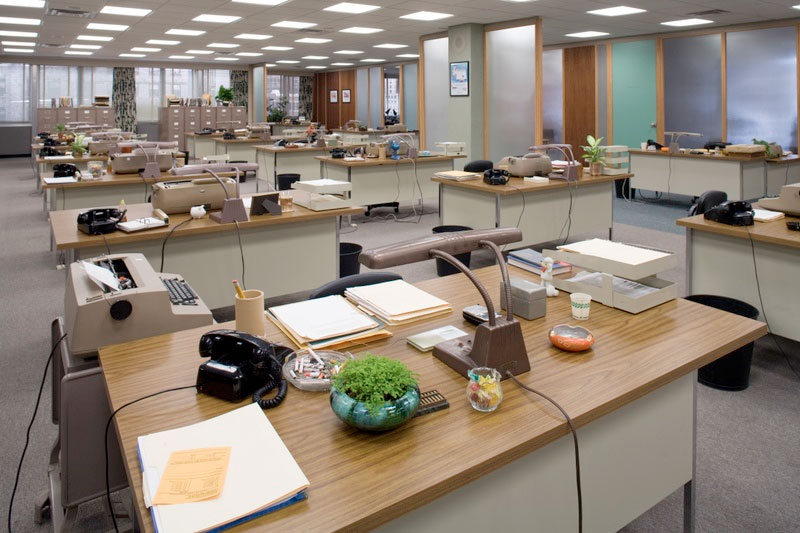
But, as the 1960’s progressed, like many aspects of society, alternative ideas in workplace design began to emerge. When Bob Propst and Herman Miller introduced the Action Office II in 1967, the “cubicle” as we know it was born. The first cubes were relatively large, filled with storage (some above), and surrounded by high panel walls that provided the workstation inhabitant an entirely new level of visual and spatial privacy and even a touch of acoustic separation.
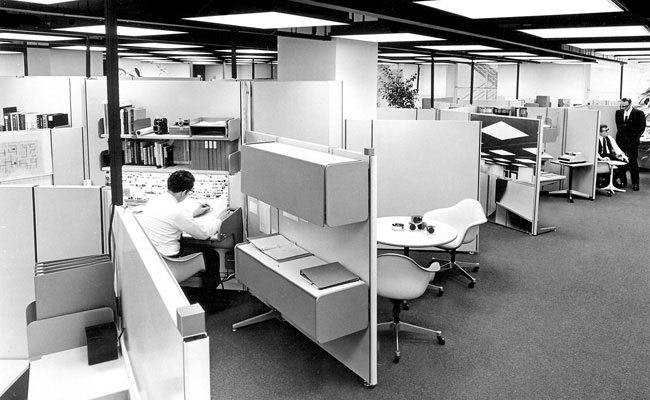
Full scale adoption of this new work environment took hold quickly through the 70’s and 80’s as the workforce began a shift from blue-collar manufacturing to a larger, more intellectual, white collar workforce. These workers, who were not high enough on the hierarchical scale of the day to receive a built, private office, still needed a place to sit and work with an adequate amount of privacy and space. The idea of “cubicle farms” began to develop and receive much criticism as super-corporations squeezed as many workstations as possible into available space. The 1982 Disney film TRON, with scenes shot at the Lawrence Livermore National Laboratory in Livermore, California projected a particularly eery view of the world of large, advanced corporate settings that were increasingly reliant on technology and a largely homogenized workforce.
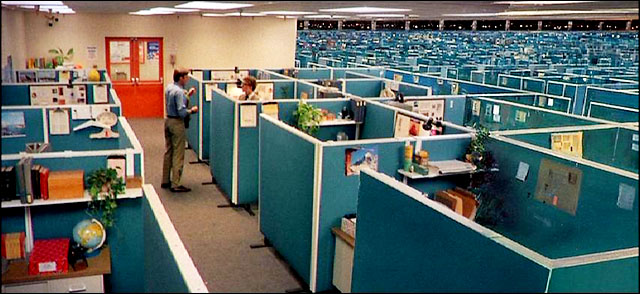
The “cube” as it is known today has evolved over the years, with panel heights that averaged 60”-84” in the 70’s, 80’s and early 90’s, back to the current trend of 3’-4’ panel heights – and even the full-fledged return of the open floor plan benching environment. A majority of today’s offices are still made up of a close relative of the originally designed panel walls of the first cubicles. But factors such as the rapidly shrinking workstation size, less reliance on paperwork, LEED goals, and a wide range of generations in the work force have brought panel heights of years past down significantly.
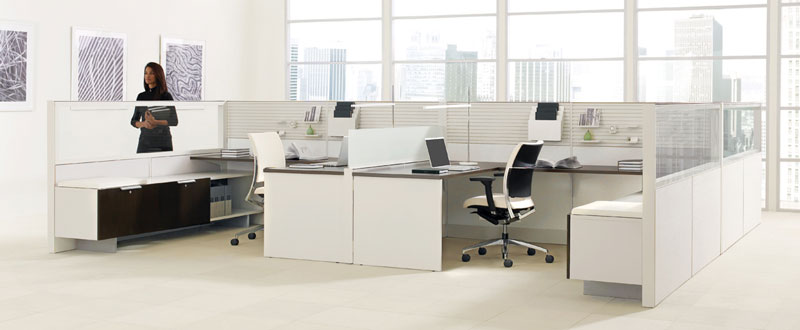
Today’s office designers use words like “seated privacy” and “visual privacy” to describe these often low panels which provide very little privacy at all. Benching is making a comeback due to economic and spatial efficiency, an increase in collaboration among teams, and the increase in hotelling and co-working by mobile workforces. The impact of these low, open environments is being felt throughout offices everywhere.
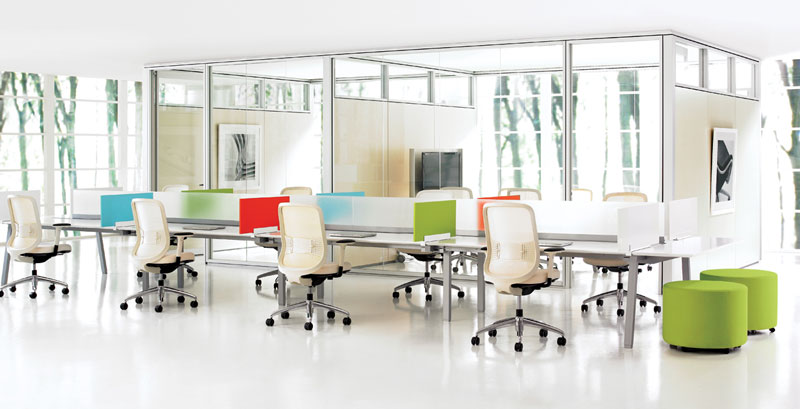
It will be seen if we are once again starting to inch our way upward toward taller panel system as people experience the highs and lows of visual, acoustical and personal privacy in their work environment. Recent criticisms of open floor plans indicate we might see a resurgence in the popularity of the higher-walled “cube” of old. As always, business will adapt and evolve – even if it is simply reverting to the past.
Image sources:
http://en.wikipedia.org/wiki/Office
http://featuresblogs.chicagotribune.com/photos/uncategorized/2008/07/25/sterling_coo_1.jpg
http://www.metropolismag.com/June-2013/An-Idea-Whose-Time-Has-Come/action-office-1st-1969.jpg
http://searchwarp.com/UserImages/188509/tron-cubicles.jpg


